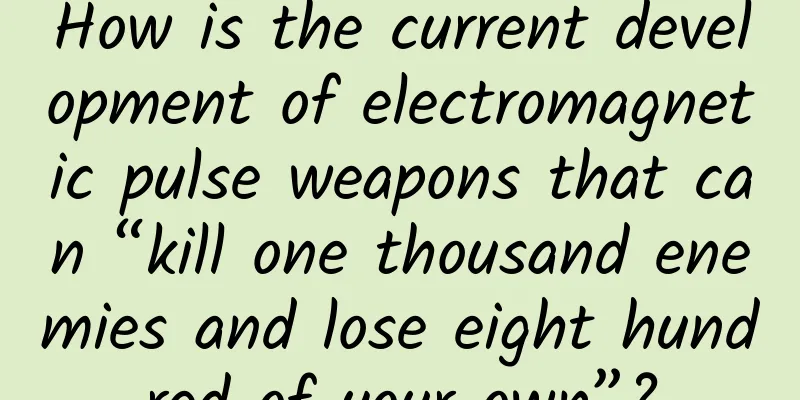This key indicator in the collider is actually related to the barn

|
What does "brightness" mean in particle physics? By Sarah Charley Compiled by Ye Li Proofread by Liu Hang Even on the hottest, driest days, the sun's rays are too weak to start a fire. But if you have a magnifying glass or a piece of glass, you can focus the sun's rays into a beam bright enough to start a fire. At the Large Hadron Collider (LHC), scientists use the same principle to focus beams of protons (and sometimes heavy ions) before they travel through four collision points in the accelerator. Scientists use high-energy particle collisions to study the fundamental laws of physics and search for new particles, fields, and forces. By focusing the proton beam before a collision, the number of collisions that scientists want to study can be rapidly increased. Scientists, engineers and technicians at CERN and around the world, including Fermi National Accelerator Laboratory, Brookhaven National Laboratory and Lawrence Berkeley National Laboratory, are working as part of the U.S. Department of Energy Office of Science's High-Luminosity LHC (HL-LHC) accelerator upgrade project. They are building new focusing magnets, which will compress colliding protons into a smaller space, and designing new steering magnets, which will help the proton beams collide head-on at the collision point by correcting the trajectory of the incident particles. In the late 2020s, scientists will start up a turbocharged HL-LHC, an upgrade that will increase the total number of potential collisions that can be studied by at least a factor of 10. Why is it called brightness instead of collision? ◆ ◆ ◆ You may have noticed that when physicists talk about particle collisions, they talk about a quantity called "luminosity." This metric doesn't tell scientists exactly how many particle collisions are happening inside a collider. In layman's terms, luminosity measures how tightly particles are packed into a crisscrossing beam of particles. The tighter the squeeze, the more likely some particles are to collide with each other. At the intersection of the four experiments in the HL-LHC, an estimated 220 billion protons whiz past another 220 billion protons every 25 nanoseconds. But the vast majority of protons don't actually interact. Even with today's best beam-focusing technology, the odds of two protons colliding in the LHC's ring orbit are still far less than the odds of winning the lottery jackpot. Protons are not solid balls that bounce, tear or break when they come into contact with each other. Instead, they are a hodgepodge of various fields plus even smaller particles (quarks). (Editor's note: For the nature of particles, see "What are particles? Wen Xiaogang's comments | The Door to Wonders") Two protons could pass through each other, and all they would do is reenact the scene in Ghost, where the ghost played by actor Patrick Swayze sticks his disembodied head into a moving train, unscathed. You can have protons collide head-on, but they won't interact. Stills from Ghost Even if two protons interact, does that count as a collision? What if two protons pass each other and emit a few photons due to the interaction of their intersecting electromagnetic fields? What if one of these stray photons enters the heart of another proton? What if two protons graze each other and eject a mess of particles, then return to their original state? Now you probably understand that defining a collision isn't that simple, so physicists use brightness instead. Collision rate ◆ ◆ ◆ In particle physics and accelerator physics, brightness is the number of events detected per unit time divided by the reaction cross section. Here the reaction cross section (cross section, σ) reflects the probability of a physical process occurring, and different physical processes have different cross sections (its dimension is area). Therefore, the more events detected per unit time, the greater the brightness. Of course, the efficiency of the detector in detecting events will also affect the brightness measurement results, so the greater the brightness does not mean a greater probability of the physical process occurring. The particle collision event rate is determined by the number of incident particles and the efficiency of the detector. The rate of particle collisions per unit time is called "instantaneous luminosity." In fact, the standard definition of brightness is instantaneous brightness, just like in physics, speed refers to instantaneous speed. "The instantaneous brightness depends on the number of particles in each beam and the beam cross-sectional area," said Paul Lujan, a postdoc at the University of Canterbury who is currently working on brightness measurements for the CMS experiment. "A smaller beam size means more potential collisions per second." Lujan said: "The brightness unit is not very intuitive, but it gives us exactly the information we need." In 2017, the LHC set a record for measuring a transient brightness of 2.06 x 10^34 per second per square centimeter. (Multiply the number of protons in each beam and divide by the change in the beam cross-sectional area over time. The latest record was set by the SuperKEKB collider in Japan, with a transient brightness of 2.40×10^34cm^(-2)s^(-1)) When scientists replenish the LHC with a new batch of particles to keep the collisions going, they need to try to keep the beam in good condition and have enough particles left to maintain a good transient brightness. Given that the average LHC fill time is 10 to 20 hours, the number of potential collisions can increase rapidly from time to time. Therefore, scientists don’t just care about the instantaneous brightness; they also care about the “integrated luminosity”. ", that is, how many potential collisions have accumulated during the operation, which is the integral of instantaneous brightness over time, The difference between instantaneous brightness and integrated brightness is like the difference between "I am driving 60 kilometers per hour now" and "I have driven 600 kilometers in ten hours." When the brightness of a collider is mentioned in general reports, it usually refers to the integrated brightness. Physicists are more concerned about the total number of events detected in the end. The more the better, and the smaller the statistical error will be (the algorithm can even be further optimized to reduce the system error). The total number of detected events is proportional to the integrated brightness. If the instantaneous brightness is not high, in order to get the same total number of events, the running time must be extended (more money must be spent). With limited funds, the running time has an upper limit, or is basically fixed, which depends on increasing the instantaneous brightness. The higher the instantaneous brightness, the better, and the more data you get in the end. The unit is "barn" ◆ ◆ ◆ For integrated brightness, physicists switched from square centimeters to a new unit of area: the barn. This is a reference to the English idiom "Couldn't hit the broad side of a barn." The word barn was first used in the 1940s, and it originated from the research on atomic bombs at that time. Its actual size (10^(-24) square centimeters) was not officially established until the end of World War II. In fact, this number is equivalent to the size of the uranium nucleus. Compared with other atomic nuclei, the uranium nucleus is definitely large. The uranium nucleus is like a huge "barn". From the perspective of subatomic particles, the "barn" is so big that it is a bit difficult to hit it. The two physicists who first proposed this word, MG Holloway and CP Parker, were at Purdue University at the time, and naturally thought of the barn, an iconic building in the farmland of the central United States. After the war, the originally confidential "barn" was passed down and eventually became the standard unit of measurement for area in the fields of nuclear physics and particle physics. Of course, there are smaller units than barns, such as 10^(-15) barns, called femtobarns, which are usually also the units of reaction cross sections. Physicists are masters of unit conversion, and those numbers that are too long to be written on the wall of a barn can be easily written on a postcard after conversion. "Imagine a food fight in a cafeteria," Lujan said. "We can calculate all the possible interactions, including the integrated brightness of the interactions between meatball bombs, based on the number of people present, the area and size of the cafeteria, and how long the food fight lasts. This can predict who will be hit by the meatballs, just like calculating the reaction cross section of the meatballs." To test the laws of physics, physicists compare their predictions about the probability of certain processes with what they measure in actual experiments. With the HL-LHC upgrade, scientists are increasing the number of protons, reducing the diameter of the collision zone, and better calibrating the protons' trajectories. All of these improvements help increase the likelihood that protons will interact as they pass through the LHC's intersections. The increased probability of collisions will help physicists discover and study very rare processes, which are key to understanding the fundamental laws of physics. References [1] Original article: https://www.symmetrymagazine.org/article/what-is-luminosity [2]https://news.stanford.edu/news/2004/july21/femtobarn-721.html [3] Illustrations courtesy of Ariel Davis, Sandbox Studio, |
<<: Can only male monkeys be king? She became the unprecedented "Wu Zetian among monkeys"!
>>: Can disposable masks protect against the sun? Be careful of getting darker!
Recommend
Hao Yan: What are the reasons that lead to over-optimization of websites?
In search engine optimization, the last thing man...
Commercial space tourism moves from science fiction to reality: How far is it from the popularization of space?
Space tourism, once upon a time, was like a plot ...
iOS 19 leaks are here, and the first new feature is exposed!
Although the official version of iOS 18 has only ...
Guangzhou fresh food WeChat mini program function, how much does it cost to develop a fresh food WeChat mall mini program?
With the continuous advancement of the Internet, m...
Clearing the charts six times throughout the year is useless. How are you, App Store?
Although the App Store has always been a battlegr...
Is the ground promotion effect poor? You may be missing channel evaluation
Field promotions through multiple channels requir...
What are some tips for early stage promotion of startups?
Every time when various Internet celebrities shar...
Today's headlines are about to be "killed by heat"
On June 6, the first game of the NBA Finals, the ...
Shanghai server cabinet rental price
The parameter configuration of Shanghai Data Cent...
Ten key words for entrepreneurship in 2015
[[161410]] In 2015, China's entrepreneurial s...
What kind of marketing plan can be implemented?
My personal summary is that the marketing goals c...
Analysis of the growth model of the "Get" APP
An article explains the AARRR, HOOK model and oth...
"Jingxi" product analysis report!
As a social e-commerce platform that was launched...
Why does winter make people want to fall in love?
© unsplash Leviathan Press: A few months ago, Mat...
Three suspensions of production led to Xinfei Electric's defection: foreign investment led to the entry of wolves
On the penultimate day of October, a board meetin...









